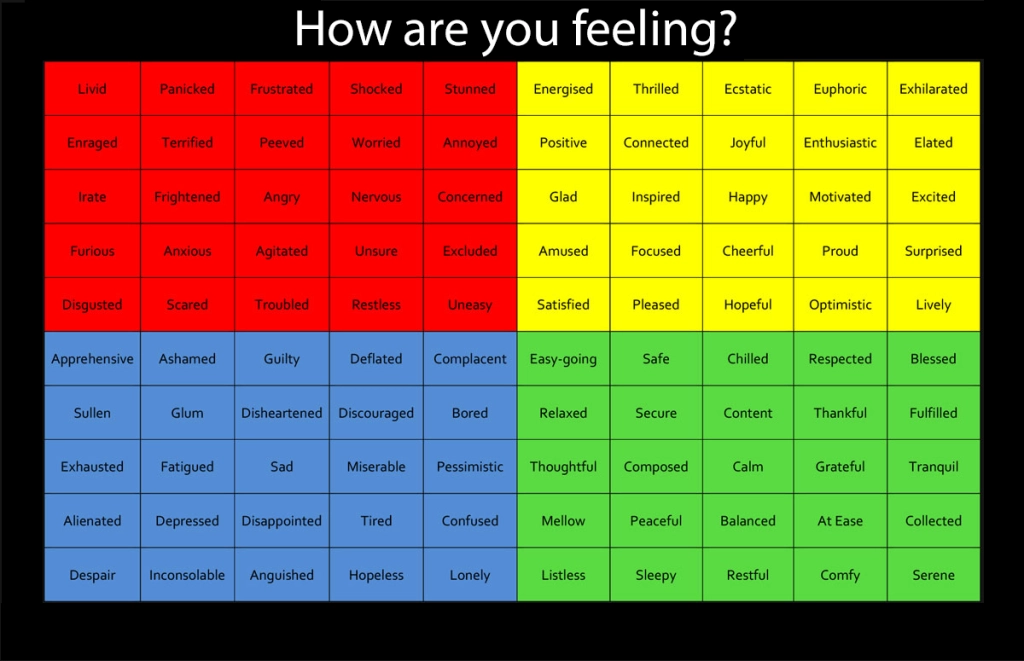
In his book, Permission to Feel,” Marc Brackett, Founding Director of the Yale Center for Emotional Intelligence, argues for the importance of privileging, understanding, and utilizing our emotions. He shows how regulating our emotions hinges on our ability to identify and name them and have them honored and understood by others. And he argues that our success in life is much more influenced by our ability to tolerate and manage all of our emotions than it is on our intelligence or knowledge. Indeed, if we are not well-regulated emotionally, our ability to capitalize on our skills and knowledge will be significantly impaired.
Brackett describes two tools that he uses in his work with school districts, parents, and corporations who are trying to do a better job of managing emotions.
The first is the Mood Meter. Emotions are divided into four quadrants, each defined by a color and then categorized by their valence toward contentment or discontent and by their intensity. Yellow feelings are positive feelings with high intensity (think passionate, excited), while green are positive with low intensity (think tranquil and calm). Red feelings are negative feelings with high intensity (think rage and anxiety), while blue are negative with low intensity (think depressed and despondent). With a whopping 25 words in each quadrant, you are bound to find a match for your current feeling state. Having a richer and more nuanced vocabulary for the expression of emotional states makes you more emotionally intelligent. You are not only better able to assess your own emotional state, but you are also better able to identify emotions in others.
The second tool is RULER. RULER is an evidence-based social and emotional learning program developed at the Yale Center for Emotional Intelligence. To follow the steps in RULER, you learn to Recognize, Understand, Label, Express, and finally Regulate your feelings.
A third grader recently told me that to recognize feelings meant that you remember them from before and then realize that that is what you are feeling now. Brilliant. Remembering how we have felt before is critical to being able to recognize our feeling states. The Mood Meter helps us to Label feelings, as it offers a nuanced array of feeling words. Understanding entails thinking about what has made us feel the way we do. For example, I’m excited because I know that my vacation is only a few days away!
Expressing and Regulating are more complicated, as they involve other people. We only express our feelings to people we trust will hold them with love and acceptance. Too often, we tell others “you shouldn’t feel that way,” and the message received is that something is wrong with me. I can’t express myself to that person anymore.
Regulating should, perhaps, be called co-regulating, as we need others to help us modulate and temper emotions that feel overwhelming. In the beginning of the life, our caregivers hold us–physically and psychically–to help us manage the overwhelming feelings of terror that infants can have. We use that model of co-regulation throughout life, as our intimate partners and friends are the ones we turn to when we need to calm down from emotions that feel too big.
The Mood Meter and RULER are tools to help us work through the process of first becoming more familiar with our own emotional states and ultimately of becoming more able to regulate ourselves, both when it is easy, calm moments, and when it is more difficult, in stormy times.

